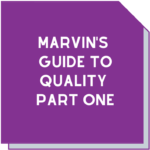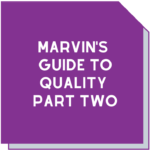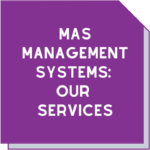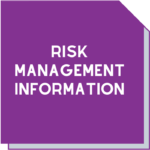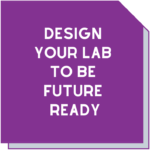Quality: A balancing act
We believe in seeking out and sharing ideas that will support your business to be better and smarter. Different perspectives on quality and business practices may provoke conversations in your workplace that lead to new and better ways of doing things. We reached out to our network of experts and asked for their perspectives on issues that may affect you and your business.
This article was written by Professor Nigel Grigg, Professor of Quality Systems at Massey University in New Zealand. Nigel is also one of the keynote speakers at the upcoming APQO/Qualcon® Conference in October.
Quality as a balance between value, risk and cost: the QVRC model
Risk, value and cost are terms that have been especially prevalent in quality management literature over recent years. A review of over one hundred years of published writings relating to quality revealed them to be themes that underscored much of quality theory and practice.
References to the economics of quality have remained quite consistent over that time. However,, value and risk are keywords that have substantially increased in their occurrence during the present century.
Value:
Value Engineering was discussed in the early 1960s as the delivery of functionality relative to cost. Michael Porter introduced the ‘value chain’ concept in the mid-1980s [1], whereby value was something that was added at each step in a production process. A growth of interest in “Lean” during the 1990s catapulted the term to even greater prominence. Customer value is now widely discussed in relation to its flow throughout the ‘value stream’ of business processes .
Risk:
As with value, risk is not new. It has always been a primary concern of quality management (QM), often under different names. Risk has been identified, managed, mitigated and reduced in different ways. These include the control of variation and uncertainty, regulatory compliance, formalised quality systems and procedures. There are also tools such as Failure Mode and Effect Analysis (FMEA).
More recently however, high-profile events have propelled risk to the very forefront of management concerns. These events include the Y2K fears, the 2008 Global Financial Crisis, the 2012 European beef supply chain scandal, a slew of major product recalls, and now the global disruption created by COVID-19 lockdown. ISO 9001 and ISO 31000 have redefined risk as the effect of uncertainty on objectives. They have emphasised the vital importance for organisations of adopting risk-based thinking.
Cost:
Managing costs has always been very explicitly discussed as a primary objective of quality, with the economics of quality featuring in the earliest writings by quality pioneers such as Shewhart, Dodge & Romig, Deming, Juran, Feigenbaum, Crosby and others.
All three themes are of importance. Considering the dynamic interplay between these concepts led me to re-conceptualise quality as a continuous balancing-act between (1) creating and delivering customer value, while (2) controlling and reducing risks, and (3) managing costs across the entire value stream from design through to the purchase decision and beyond. This resulted in a model which I have labelled the QVRC (Quality, Value, Risk and Cost) model of quality (figure 1).
Figure 1: The QVRC Model [2]
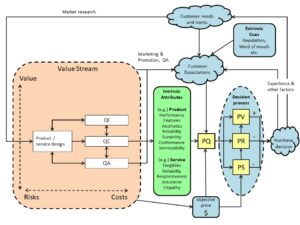
Legend: QA = Quality Assurance, QC = Quality Control, QI = Quality Improvement, PQ = Perceived Quality, PV = Perceived Value, PR = Perceived Risk, PS = Perceived Sacrifice
The producer side of the model
Beginning on the producer (light orange, left hand) side, the producer of a product or service aims to create an output. This is something that can be produced or delivered, and that a customer will want to pay for. The design process is intended to create both the product/service and the system to deliver it. Feeding into the design process as inputs are the stated or unstated needs and wants of the customer/market.
To help with the design process we can employ a range of quality-oriented tools such as FMEA, Quality Function Deployment (QFD), Design for Six Sigma (DfSS) and many others. These methods are themselves oriented more towards value addition, risk management or cost control. This means that methods can be used that align well with the value/risk/cost (V/R/C) profile of the intended product or service.
In managing the production system (the value stream), the producer aims to create the (designed) value while minimising inherent risks and operating costs as far as possible. Again, the producer can call upon a wide range of quality tools and methods to help with this.
For example, Lean can help identify value flow and sources of waste (or risks to value flow). Quality control (QC) can minimise unwanted variability (uncertainty – also a form of risk) that costs money and detracts from value. QA or Quality assurance can provide confidence to customers that systems are compliant, robust, well designed and being used. This will allay their concerns about potential risk. Quality improvement (QI) can seek to continually reduce potential for risk and cost within the system.
At all points, the producer can use the costs of quality as a guide to the effectiveness of the above.
Attributes of the product of service
Certain ‘intrinsic’ attributes can verify objectively that the product/service meets design specifications and customer expectations.
The attributes shown at the centre (green area) of the QVRC model are those developed by David Garvin [3] for products, and by Parasuraman, Zeithaml and Berry [4] for services. These and other attributes (since there are many others, for different product/service types) can be measured with either producer or customer-derived data.
These attributes are the interface between producer and consumer. Attributes such as reliability, performance, features and durability can be promoted as components of value (e.g. water resistance to 300m) or to allay fears of early failure (risk).
The QVRC model can be adapted to apply to different product/service types by changing the intrinsic attributes appropriately.
The customer side of the model
The customer (towards the right-hand side of the model) has needs and wants (of which they may even not be fully aware) driving their receptiveness to purchasing a product or service.
They will also have expectations about the product or service they want to buy based on extrinsic cues such as advertising, marketing, word-of-mouth communications, user testimonials, web reviews or previous experience with similar products.
These, together with the intrinsic attributes mentioned above and the objective price, will be primary determinants of the perceived quality (PQ) of the product/service.
The prospective customer will balance the value, risk and cost associated with buying the product/service (the yellow boxes). They will consider buying a product or service that provides them with some value (perceived value, or PV).
If the perceived price is not a significant barrier, the customer will also consider any perceived risks (PR) associated with purchase. Cost is only one of these risks and is often termed ‘perceived sacrifice’ (PS). Perceived risks for the consumer include that a product might break, wear out, become quickly outdated, fail to deliver as expected and so on. If the balance is favourable to the customer, they will likely buy the product/service.
It is important to re-state that these dimensions are entirely unique to every single person (hence they are subjectively ‘perceived’).
Use of the model
The QVRC model has several potential uses:
As a framework for positioning products and services
Products and services have differing value/risk/cost profiles, and customers also have individual, unique perceptions of value, risk, and cost.
The model encourages producers to consider the profile of their product/service and seek to understand the customer profile.
To give a service example: the provider of a tourist bungee-jumping operation might want to provide the appearance of risk to provide the consumer with the memorable thrill (value) that they are looking for. But the provider must also minimise the risks inherent within the process through extensive and rigorous safety protocols and related checks.
A product example is the value proposition of the Japanese ‘fugu’ pufferfish. This has a fine and refined flavour. It is also rare and potentially deadly due to the tetrodotoxin. Hundreds have died from eating fugu over the years. This includes those who have been fraudulently sold it at markets as a different fish! Great expertise is required in its preparation, which implies that the dish is sophisticated and exclusive.
For the legitimate restaurateur, hiring suitably qualified and experienced chefs is vital. They must also ensure that all appropriate protocols are in place (including the basic legal food safety compliance systems) to appropriately match the risk factor from the product. This will add cost. However, the customer expects to pay more for this delicacy, and higher cost is merely part of the perceived value bundle.
As a framework for selecting quality design and management tools and methods
There are dozens if not hundreds of possible quality design, management, control, and improvement methods available.
If a manager knows that the primary aim of their process is reduction of risks in the product (such as dairy products, where safety is a basic expectation of the consumer) then methods such as quality standards, FMEA and statistical process control become of relatively greater utility than certain others. Other methods are still useful, of course, but may not achieve risk control to the same extent.
Alternatively, if high levels of flexibility and product customisation are of primary importance, then Lean or Agile will be valuable methods to pursue at an early stage.
As an aid to understanding the interaction between value, risk and costs within total quality management
The model does not aim to provide a complete model of total quality management.
However, it shows how value AND risk AND cost flow interact simultaneously throughout the value stream. This goes from design through the purchase decision and beyond (e.g. servicing and repair).
All require some level of attention and managing. The relevance of various QM methods and tools to these quality objectives then becomes more evident. Management and staff can understand how (and how much) a tool contributes to one or another objective.
Further information about the APQO/Qualcon® Conference can be found at https://qualcon.com.au
For systems support and enquiries, contact us at info@masmanagementsystems.com.au
References
[1] Porter, M. (1985) Competitive Advantage: Creating and Sustaining Superior Performance. New York.: Simon and Schuster.
[2] Grigg, N. (2020) Redefining quality in terms of value, risk and cost: a literature review, International Journal of Quality and Reliability Management.
[3] Garvin, D. A. (1984). What does ‘product quality’ really mean? Sloan management review, 26, 25-43.
[4] Parasuraman, A., Zeithaml, V. A. & Berry, L. L. 1988. SERVQUAL: A Multiple-Item Scale for Measuring Consumer Perceptions of Service Quality. Journal of Retailing, 64, 12-40.
Download the article Quality: a balancing act


